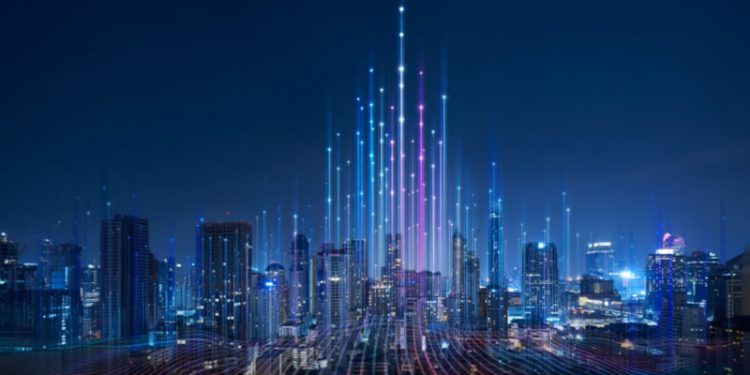“Smart Cities” is a term that many people have come across in recent years, but how many know what they really are? Most seem to have only a vague idea, if any idea at all, and may even envisage something akin to what they’ve seen in a sci-fi movie like Blade Runner.
Put simply, smart cities are cities that incorporate technology to transform daily life for the better by such things as making them more sustainable, efficient, transparent, and intelligent. This smart technology includes the internet of things (IoT) and technologies like geographical information systems (GIS software) to analyze and understand huge amounts of data which is collected from a range of sensors and other devices.
Smart city infrastructure receives masses of data from technologies like smart sensors while the internet of things synchronizes the different systems and devices. GIS software unifies relevant data so that analysis is easier to perform. This technology is being utilized by a range of businesses and industries to increase efficiency and workflow. This unified database provides valuable information to planners and management for the development and maintenance of smart cities.
The Benefits Of Smart Cities
GIS systems make sense of huge amounts of collected data, including building details like location, form, function, and interactions, and allow the user to get a clearer picture.
The primary function of smart cities is to take into account the needs and requirements of those living in them, and IoT devices play a key role in this. The developers of smart cities work to ensure that as many appliances as possible are working well together, whether your toaster, fridge, freezer, TV, or air conditioning.
Citizens living in smart cities like Amsterdam or Songdo benefit from cities that are responsive to their needs, as these citizens can review the performance of their cities and introduce ways of improving things with consideration of their feedback and recommendations.
Smart cities like Songdo and Masdar City have shown how things can be rectified when issues arise, like with important aspects such as sustainability, public administration and services, governance, utilities, and health systems and education. In Songdo, for example, sensors continually monitor the city’s water flows, energy, and traffic conditions for ways to optimize them. Masdar City, meanwhile, is powered by renewable energy and is working towards having no waste, with an eye on achieving the status of becoming the world’s most sustainable eco-city.
Better Quality Of Life
“Municipal leaders and planners realize that smart cities are people-centric and not just about installing masses of smart devices and sensors all around the city in extant infrastructure or making city operations more efficient. Smart cities, as they recognize, are also about being useful to people’s lives. They are about better decision making and improving quality of life, “said Jamie Johnson, CEO of FJP Investment. “Quality of life can be improved by such things as reducing crime, shorter commutes, better health, carbon emissions, and cleaner air.”
Smart cities are all about collecting huge amounts of data and, by making better decisions, making that data work to improve the quality of life for the people living in them.
The real-time data acts as the eyes and ears of central planners, which affords them insights into demand and changing patterns and allows them to respond with speed and cost-saving efficiency. This data can be used to encourage changes in behavior like traveling during off-peak hours, altering routes, saving energy and water by using less at peak periods, and helping reduce stress on healthcare systems through preventative self-care.
Crime And Public Safety
With improvements to the deployment of a range of applications, smart cities can help reduce fatalities from violence, road traffic accidents, and fires. Although not a panacea for preventing crime, data, and technology can be better utilized to deploy resources and personnel more efficiently to where it is needed the most.
A good example of this is real-time crime mapping, which can be used to analyze statistics and reveal patterns, whereas predictive analytics can take it even further by anticipating crimes or incidents before they occur. Law enforcement can be alerted to incidents by gunshot detection sensors, smart surveillance, and other security systems. However, civil liberty advocates have rightly pointed out that data-driven policing must be monitored carefully and deployed in a way that protects people’s civil rights and freedoms while not criminalizing specific neighborhoods or demographic groups.
Final Words
When it comes to emergencies with responding ambulances or police, speed is of the essence and utmost importance. Smart systems can aid in this by optimizing call centers and operations, while traffic light signals can be adjusted to help emergency vehicles get through the traffic much quicker by ensuring a clear path. If only a few minutes or even seconds could be shaved off the response times, every bit helps in emergency situations and many lives could potentially be saved.
Follow Techdee for more!





